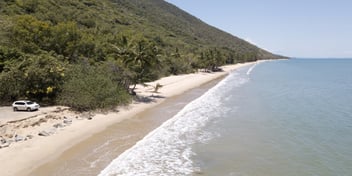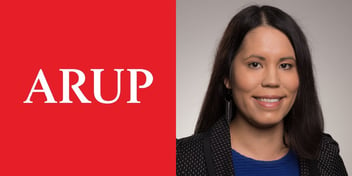Victorian utilities partner up on carbon credit agreement to meet net zero

With net zero deadlines looming, many water organisations around Australia are working on plans to reduce, eliminate and offset carbon emissions within the next five to 10 years. But one innovative Victorian partnership is showcasing how working together makes a big difference.
Southern Rural Water and Wannon Water have formed a trade agreement to help meet net zero, with Wannon Water set to trade 3000 Australian Carbon Credit Units (ACCUs) to Southern Rural Water from 2024 to 2030.
ACCUs are tradable financial products – one ACCU represents one tonne of carbon dioxide equivalent that would otherwise be released into the atmosphere.
Wannon Water generates ACCUs through its carbon reforestation project and has agreed to help Southern Rural Water achieve net zero by 2025 under the terms of the ACCU trade agreement.
Southern Rural Water General Manager Strategy, People and Culture Elisa Hunter said the utility’s Climate Change Mitigation Plan provides a pathway to meet its emissions reduction target and achieve net zero by 2025.
“This commitment to meet net zero by 2025 is very ambitious. At the time Southern Rural Water made this commitment, the organisation didn’t yet know how it would get there, but set out developing the pathway to achieve that target,” she said.
“We needed to be open to looking outside of our organisation and seeing how we can leverage partnerships to achieve our goals. We are really appreciative of Wannon Water’s openness to this partnership.”
Wannon Water Managing Director Andrew Jeffers said the Victorian water sector had made a commitment to achieve net zero carbon.
“Our customers and stakeholders expect us to work together. We don't need to use our ACCUs for a while, and so there is no reason why we wouldn’t help one of our allied organisations to achieve their target,” he said.
“Working together with the broader water sector to generate further carbon offsets is one of the initiatives in our net zero strategy. Most water corporations in Victoria are looking to achieve net zero by 2025 or 2030.
“We’re not competing with each other; we need to work together to achieve these goals.”
Tackling Scope 1
Southern Rural Water has already achieved net zero on Scope 2 emissions thanks to the utility’s unique operating environment and investment in solar, Hunter said, but Scope 1 emissions associated with the utility’s fleet have proven more challenging to eliminate.
“We are different from other utilities in that most of our network is gravity fed – we don't have a huge amount of pump stations. We manage rural water, so we have traditional channels that run via gravity,” she said.
“This all means that our Scope 2 emissions are smaller than other utilities, especially in the urban setting. We are meeting Scope 2 requirements through installing solar at most of our facilities and we are also a partner on the Zero Emissions Water project.
“Our biggest challenge is really the size of our fleet footprint compared to our workforce. We have 170 employees, so we are considered a small business. But due to the distances our employees need to travel, our fleet footprint is significantly higher.”
Hunter said the utility’s Climate Change Mitigation Plan includes actions to reduce Scope 1 emissions, including transitioning the fleet through the purchase of low or no emissions vehicles.
“Southern Rural Water runs from the South Australian border to the New South Wales border to the south of Victoria. We do a lot of travel. The pandemic helped open our eyes to be conscious of when we need to travel, versus traveling frequently,” she said.
“We are minimising vehicle use, and COVID has been a key enabler to that, but we still have a gap of about 500 tonnes of carbon per year. So, we require the ACCUs to meet our Scope 1 emissions reductions.
“By trading ACCUs from Wannon Water, we are able to fill that gap until we can implement our own carbon reforestation project, which we are exploring at the moment. This will enable us to pay Wannon Water back those ACCUs when they need it.”
While the 3000 ACCUs from Wannon Water will meet Southern Rural Water’s needs to remain net zero through until 2030, the utility will continue to transition its fleet, Hunter said.
“Technology in this space is shifting. While we don’t yet have access to the types of vehicles we need to support our field workers now, that will change soon. We are confident that in the next five years, we will be looking at a very different fleet to the one we have now,” she said.
Generating ACCUs
Wannon Water has been working on climate adaptation and mitigation for quite some time, Jeffers said, and the utility now has a number of initiatives already on the ground, including a wind turbine to power the wastewater treatment plant in Portland.
“Fugitive emissions associated with our sewage treatment operations generate gases that impact the carbon balance. Fugitive emissions constitute about a quarter of our emissions at present,” he said.
“Fugitive emissions from sewage are one of the big challenges the water sector has to deal with. It's a problem we are yet to solve. One way to account for fugitive emissions in the interim is to offset through reforestation projects.
“Back in 2009 we planted 360 hectares of Blue Mallee trees in the Wimmera area. Those trees have had the chance to grow and mature, producing about 2500 tonnes per annum worth of ACCUs.
“We are building up a bit of a stockpile of ACCUs at the moment, and we’ll be using them from 2030 onwards.”
Hunter said Southern Rural Water is in the early stages of its own carbon reforestation project, but certainly looks forward to maturing into ACCU regeneration within the next five years.
“We are currently exploring all of our land holdings to find the most suitable locations to plant. Those plots of land sit around our reservoirs. We are going through the assessment phase,” she said.
“Soon, we will be getting our business case approved by the board and working through the project planning. And we will be looking to plant up to 200 hectares.”
Importance of partnerships
While the pathway to net zero for water organisations is by no means straight forward, Hunter said one of the most important aspects of achieving these goals is the dedication to working together.
“Having a bold vision and being aspirational is an important first step. We could have settled on 2030, but we wanted to challenge ourselves, and that challenge led to the solutions,” she said.
“One of our strategic objectives is to be a great partner. We recognise that we can’t achieve our aspirations alone. It’s also really important to have good relationships that are true partnerships. We see this trade agreement as a really great example of that.
“Wannon Water is able to provide us with great value right now, and we are going to be in a position to provide that value back to them in future. It’s a win-win. Working together, we can create greater outcomes for the industry and all of our customers.”
Jeffers agrees, stating that the carbon credit trade partnership is likely to be highly successful due to the fact that the two utilities already have the foundation of a trusted relationship.
“Southern Rural Water and Wannon Water have had a strong working relationship for a long period of time. And this innovative solution is the type of thing that comes out of organisations working together,” he said.
“We generated the idea through discussion and moved ahead with it. Why not? We have a solid relationship with Southern Rural Water and it’s in our interest to help them achieve their goals.”



